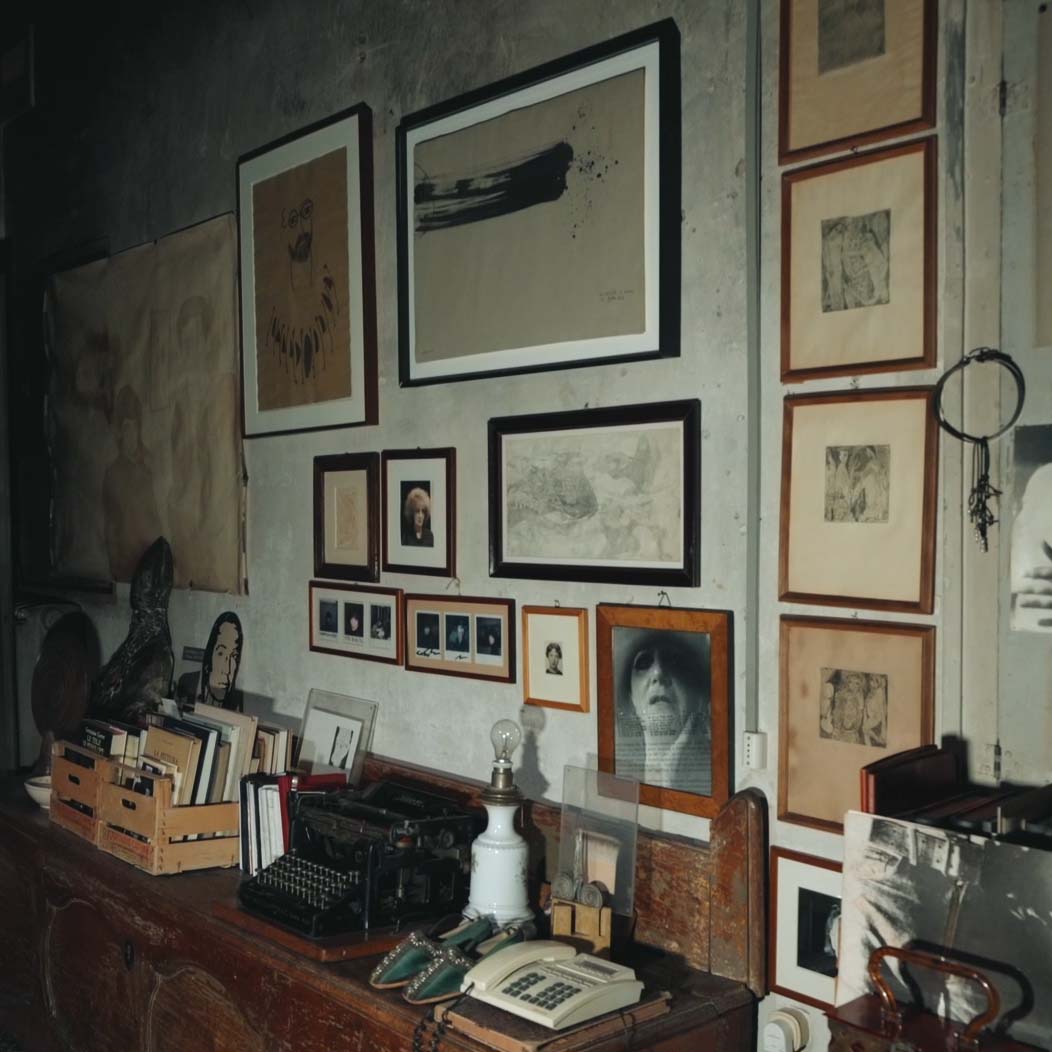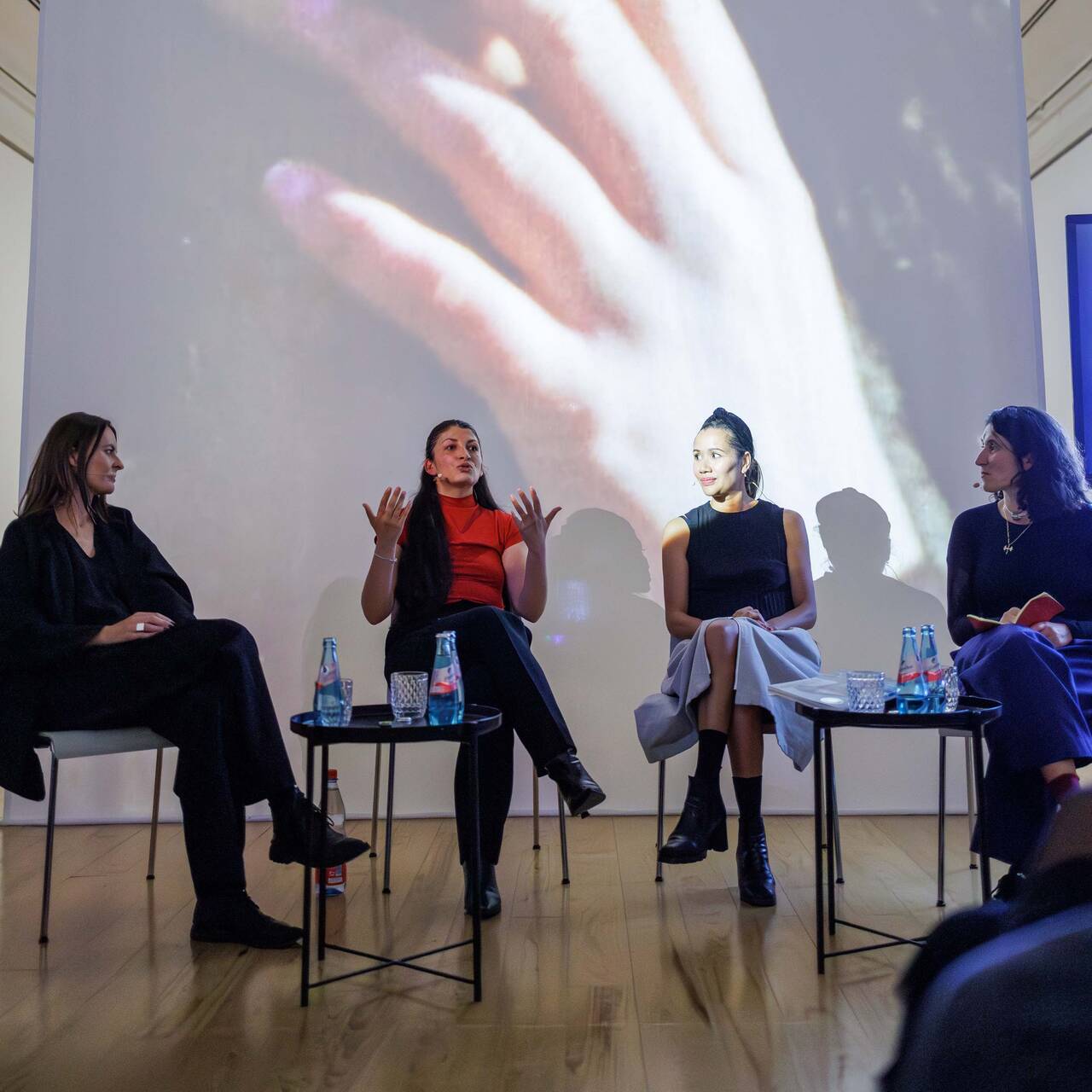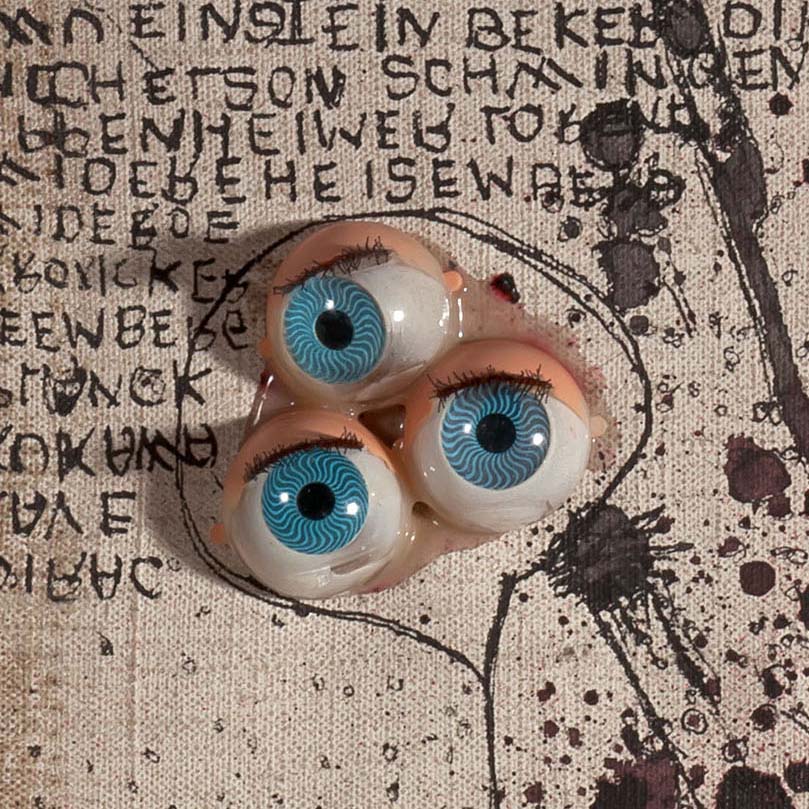Inspired by the actions of the Parisian Surrealists, around the end of the 1920s a Surrealist group also developed in Brussels, centered around René Magritte. Yet the Belgians differentiated themselves from the French in certain crucial ways.
“SURREALISM, noun – Psychic automatism in its pure state, by which one proposes to express – verbally, by means of the written word, or in any other manner – the actual functioning of thought. Dictated by thought, in the absence of any control exercised by reason, exempt from any aesthetic or moral concern.”
This is how André Breton defined the movement he had founded with some of his artist friends in his 1924 “Manifesto of Surrealism.” Their aim was to distance themselves from the satirical actions of the Dadaists with a new definition of art and to trigger a “surrealist revolution.” Hence this was the name given to the journal that André Breton, Pierre Naville and Benjamin Péret published from 1924 onwards.
A fascination for puzzling symbols
Plain and harmless on the surface, the texts and drawings in the magazine dealt, amongst other things, with the depths of the psyche, with violence, sexuality and suicide. After all, the Parisian Surrealists were fascinated by the secrets of the subconscious, and there was great enthusiasm for Sigmund Freud’s “interpretation of dreams” and its explanation of puzzling symbols.
They used techniques such as automatic writing and painting in order to bring what was hidden inside to the fore – an approach the Surrealists believed would lead to the resolution of all problems: “Surrealism is based on the belief in the superior reality of certain forms of previously neglected associations, in the omnipotence of the dream, in the disinterested play of thought. It tends to ruin once and for all all other psychic mechanisms and to substitute itself for them in solving all the principal problems of life,” Breton went on to say in his Manifesto. He claimed a belief “in the future resolution of these two states, dream and reality, which are seemingly so contradictory, into a kind of absolute reality, a surreality, if one may so speak.”
The dream as a mirror of the subconscious
In Belgium they took a different view. Shortly after the publication of Breton’s writings in Paris in 1924, the Belgian writers Paul Nougé, Camille Goemans and Marcel Lecomte got to work compiling “Correspondence,” initially published as a total of 22 pamphlets distributed to the public – which in this instance primarily comprised poets and fine artists – at intervals of ten days. Some of the writings found their way into the circles of Parisian Surrealists, where they were met with a frosty sort of respect – the relationship between the artists in Brussels and those in Paris was permanently characterized by this mixture of tension and high regard.

This was, not least, down to the fact that those in Brussels had little regard for the “omnipotence of the dream,” as preached by Breton. One “Correspondence” contains a text against the perception of the dream as a subconscious source to which one has unhindered access; because when you attempt to communicate this dream you inevitably hark back to the words or the image, something that happens perhaps not “directly,” but in an organized way.
A bottle is a bottle and not a womb
Those in Paris were convinced that not only did they have to first consider their dreams carefully, but also implement them directly and in refined form in an image or a text – but the Belgians viewed this with some skepticism. Magritte too rejected the description of his paintings as ‘dreamlike’: “The word ‘dream’ is often misused concerning my painting. My works are not oneiric, on the contrary. If ‘dreams’ are concerned with this context, they are very different from those we have whilst sleeping. It is a question of self-willed ‘dreams’ in which nothing is as vague as those feelings one has when escaping into dreams. Dreams that are not intended to make you sleep, but to wake you up,” he is quoted as saying – and this despite the fact that one appears to come across symbols and stories from the subconscious in his very paintings. Yet the smart man with the bowler hat had little time for overly imaginative interpretations of his images: “In my painting a bird is a bird. And a bottle is a bottle, not a symbol of a womb.”

André Breton, 1924/1929. [Public domain or Public domain], via Wikimedia Commons
René Magritte took to the stage of Belgian Surrealism in 1926 when he published texts and illustrations in the critical Surrealist art magazine “Marie” published by the writer E.L.T Mesens, and in doing so broke away from Dadaism once and for all. “Marie” initially appeared as competition to the “Correspondence,” but Nougé and Magritte quickly became friends and in 1928 founded the publication “Distances” – thus becoming the mouthpiece of the Brussels-based movement. Like Magritte, Nougé also rejected automatic writing and was more interested in the coming together of word and image. Many titles of Magritte’s works come from Nougé’s pen.
Magritte in Paris
Although in hindsight René Magritte’s Surrealist paintings slot perfectly into the pictorial worlds of the Parisian Surrealists, it wasn’t easy for the Belgian to gain access to Breton’s circle. And although Breton overwhelmed Magritte with all manner of tasks one had to fulfil without resistance in the circle of the Surrealists, he neither urged him to sign important tractates with other artists nor did he mention him in his book “Surrealism and Painting,” published in 1928.
René and Georgette Magritte, a bourgeois, married and scandal-free couple, appeared suspicious to the Surrealists, who were known for their extravagant lifestyle. It was only in 1929 (Magritte and his wife had been living in Paris for two years and Magritte had already painted over 100 new pictures) that he wrote the article “Le mots et les image” (“Words and images”), which was published in the group’s own publication “The Surrealist Revolution.” André Breton and René Magritte were respectful of each other – Breton even purchased one of Magritte’s paintings – but friends they were not.
A little less excess
He couldn’t take seriously someone who had no time for music, fulminated Magritte, after Breton had labelled the art form ‘snobbish.’ Whereas in Paris the Surrealists rebelled against the bourgeoisie, despised music and sought to plumb the dark depths of the soul, in Brussels they cultivated a rather more playful, less revolutionary and less excessive surrealism, with the aim of “casting doubt on reality through reality itself.” All the while armed with an umbrella, charm and a bowler hat.

The film to the exhibition: Hans Haacke. Retrospective
A legend of institutional critique, an advocate of democracy, and an artist’s artist: The film accompanying the major retrospective at the SCHIRN...

A new look at the artist – “L’altra metà dell’avanguardia 1910–1940”
With “L’altra metà dell’avanguardia 1910–1940”, in 1980 Lea Vergine curated an exhibition at the Palazzo Reale in Milan that was one of the first...

Non-human living sculptures by Hans Haacke and Pierre Huyghe
In his early work, HANS HAACKE already integrated animals and plants as co-actors into his art. In that way he not only laid the foundations for a...

CURATOR TALK. CAROL RAMA
SCHIRN curator Martina Weinhart talks to Christina Mundici, director of the Carol Rama Archive in Turin, editor of the first Catalogue Raisonné and...

Freedom costs peanuts
HANS HAACKE responded immediately in 1990 to the fall of the Berlin Wall and turned a watchtower into art.

The film to the exhibition: CAROL RAMA. A REBEL OF MODERNITY
Radical, inventive, modern: The film accompanying the major retrospective at the SCHIRN provides insights into CAROL RAMA's work.

Now at the SCHIRN: Hans Haacke. Retrospective
A legend of institutional critique, an advocate of democracy, and an artist’s artist: the SCHIRN presents the groundbreaking work of the compelling...

Carol Rama’s Studio: A nucleus of creativity
CAROL RAMA determinedly forged her own path through the art world. Her spectacularly staged studio in Turin was opened to the public only a few years...

PANEL: POLITICAL ACTIVISM BY SELMA SELMAN
Hosted by Arnisa Zeqo, Amila Ramović and Zippora Elders speak with the artist Selma Selman about her artistic career, the exhibition SELMA SELMAN....

Now at the SCHIRN: Carol Rama. A rebel of Modernity
Radical, inventive, modern: the SCHIRN is presenting a major survey exhibition of CAROL RAMA’s work for the first time in Germany.